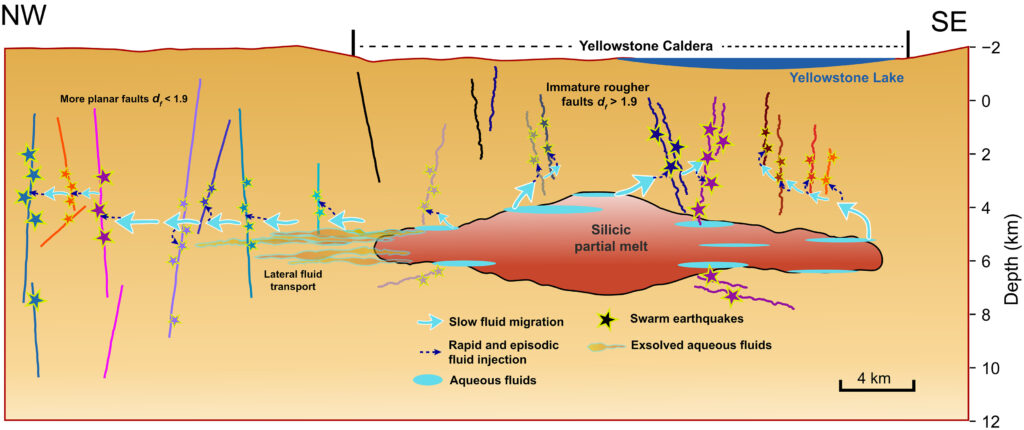
In a groundbreaking revelation, artificial intelligence has uncovered a tenfold increase in the number of earthquakes occurring beneath the Yellowstone caldera than previously recorded. This discovery, stemming from a comprehensive analysis of 15 years of historical seismic data, has profound implications for understanding the geological dynamics of one of America’s most iconic national parks.
The Yellowstone caldera, a massive volcanic depression spanning parts of Wyoming, Idaho, and Montana, has long been a subject of scientific intrigue and public fascination. Known for its geothermal features and scenic beauty, the park’s volcanic underbelly is now understood to be far more active than earlier believed, thanks to advanced machine learning techniques.
Machine Learning: A Game Changer in Seismic Analysis
Traditionally, earthquake detection relied heavily on manual inspection by trained seismologists, a process that was both time-consuming and costly. However, the advent of machine learning has revolutionized this field, enabling researchers to mine vast datasets with unprecedented efficiency. The recent study, which analyzed seismic data from 2008 to 2022, identified 86,276 earthquakes, a staggering increase from previous estimates.
According to the study, more than half of these seismic events were part of earthquake swarms. Unlike aftershocks, which follow a significant seismic event, swarms consist of numerous small, interconnected tremors occurring in a concentrated area over a short period. This phenomenon is particularly prevalent in the Yellowstone region, where the interplay between slowly diffusing underground fluids and episodic fluid injections into active faults triggers these swarms.
Understanding the Caldera’s Complex Dynamics
The Yellowstone caldera’s seismic activity is characterized by its unique geological structures. The study employed fractal-based models to analyze the roughness of fault lines, revealing that earthquake swarms tend to occur along less mature, rougher faults. This contrasts with more mature fault structures found in regions like southern California.
“To a large extent, there is no systematic understanding of how one earthquake triggers another in a swarm. We can only indirectly measure space and time between events,” said University of Western Ontario engineering professor Bing Li. “But now, we have a far more robust catalogue of seismic activity under the Yellowstone caldera, and we can apply statistical methods that help us quantify and find new swarms that we haven’t seen before, study them, and see what we can learn from them.”
Implications for Future Research and Monitoring
The enhanced seismic catalog not only provides a more detailed picture of the Yellowstone caldera’s activity but also opens new avenues for research. By applying statistical methods to this enriched dataset, scientists can better understand the triggers and patterns of earthquake swarms, potentially leading to improved predictive models.
This development follows a broader trend in the scientific community, where machine learning is increasingly used to revisit historical data and uncover previously hidden insights. The ability to process and analyze vast amounts of data efficiently is akin to a “data-mining gold rush,” offering new perspectives on seismic activity worldwide.
Historical Context and Future Directions
Yellowstone’s geological history is marked by significant volcanic events, with the last major eruption occurring approximately 640,000 years ago. While the likelihood of another catastrophic eruption remains low, the park’s continuous seismic activity underscores the importance of ongoing monitoring and research.
As scientists continue to refine their understanding of the caldera’s dynamics, the integration of advanced technologies such as machine learning will be crucial. These tools not only enhance our ability to detect and analyze seismic events but also contribute to broader efforts in disaster preparedness and risk mitigation.
By the Numbers: The Yellowstone caldera’s historical catalog now shows 86,276 earthquakes from 2008 to 2022, a tenfold increase in recorded seismic events.
Looking ahead, the insights gained from this study will inform future monitoring strategies and potentially aid in the development of early warning systems for volcanic activity. As researchers delve deeper into the data, the mysteries of Yellowstone’s subterranean world may gradually be unveiled, offering a clearer picture of the forces shaping this unique landscape.







